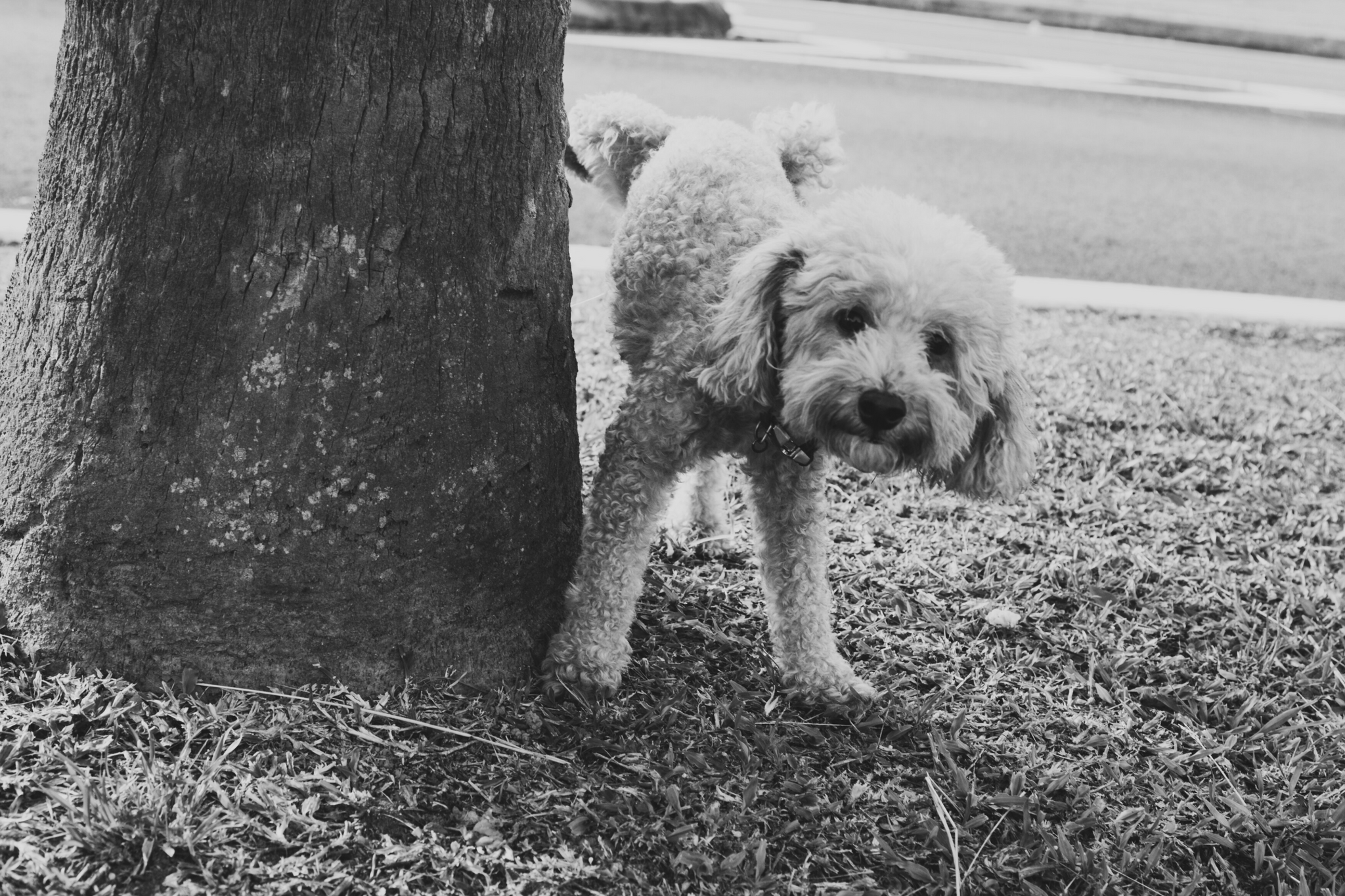
Why Do Dogs Pee in the Same Spot? The Science Behind Canine Behavior
Ever wonder why your dog seems to pick the same exact spot to do their business, time after time? This quirky habit isn’t just random; it’s rooted in ancient instincts and serves as a key form of canine communication.
From marking territory to leaving “messages” for other dogs, your pup’s repetitive bathroom behavior reveals a fascinating world of instinctual habits and social signals.
The Chemistry of Scent Marking for Dogs
When dogs urinate, they release more than just waste products. Their urine contains complex chemical compounds called pheromones, which carry detailed information about their age, gender, health status, and reproductive state. These chemical messages create an invisible but information-rich landscape that dogs can read and interpret with their highly developed sense of smell.
How Dogs Mark Their Territory and Communicate
Dogs treat their favorite urination spots like personal bulletin boards, using them to both gather information and leave messages for others.
Every time they mark a spot, they’re engaging in a sophisticated form of communication that connects them to a larger social network. By urinating in the same place, a dog can announce their presence, establish the boundaries of their territory, or even signal their reproductive status. These spots also serve as a source of information, allowing dogs to learn about others in the area—who’s been there, what their intentions are, and even how recently they passed by.
Over time, these locations become part of their routine, anchoring them to familiar paths and patterns in their environment.
Dogs rely on both scent and visual cues to remember their favorite marking spots, creating a mental map of their environment. This map helps them navigate more effectively, providing a sense of security within familiar territories. By revisiting the same locations, dogs establish consistent patrol routes and maintain predictable routines that reinforce their connection to their surroundings.
These patterns not only support their instincts but also create a sense of order and comfort in their daily lives.
Social Aspects and Pack Behavior
Dogs, even as household companions, retain deep-seated pack instincts that influence their marking behavior and play a key role in their social interactions. This behavior helps them define territories, communicate with other dogs, and maintain social order within their group. By marking certain spots, dogs convey information about their presence, establish boundaries, and reinforce their place in the hierarchy of their social environment.
The way dogs mark varies depending on factors like gender and age, with noticeable differences between male and female behavior. Male dogs are more frequent markers and often prefer vertical surfaces such as trees or poles. They also engage in over-marking, where they add their scent on top of another dog’s mark as a display of dominance or territorial control. This behavior is particularly common in intact males, whose marking is more influenced by hormones.
Female dogs, in contrast, tend to mark less often and favor horizontal surfaces. Their marking behavior becomes more pronounced during reproductive cycles, as their scent communicates important information about their status to other dogs. Females generally display more subtle marking patterns, using their scent for communication rather than dominance or territorial claims.
These behaviors, shaped by instinct and biology, reflect the natural ways dogs interact with their surroundings and others in their environment. By marking and responding to these cues, dogs maintain social balance and a sense of connection to their group and territory.
The Science of Scent Preference
Dogs exhibit distinct preferences for marking locations, influenced by both chemical and physical factors. Chemically, they are drawn to areas with existing urine deposits, high concentrations of pheromones, or other environmental scents and natural attractants that signal the presence of other animals. Physically, they tend to choose spots with specific surface textures, accessible heights, or locations that are highly visible to other dogs. Additionally, they often favor areas that provide some protection from the elements, allowing their scent to linger longer and remain effective as a form of communication.
How to Prevent Marking or Stop a Dog from Peeing in a Spot They Have Marked
Breaking your dog’s habit of peeing in the same spot requires a combination of training, environmental changes, and effective cleaning methods. Dogs rely heavily on scent to determine where to mark, so addressing the behavioral and environmental factors is essential to stop the cycle.
Block Dog Access to the Marked Spot
Dogs are drawn to specific physical and chemical cues, so altering the marked area can make it less attractive. For indoor spots, you can place deterrents like aluminum foil or textured mats over the area to discourage your dog from stepping there. Outdoors, consider rinsing the area with water to dilute any residual scent and applying natural deterrents like citrus peels or vinegar, which are unpleasant to dogs.
If possible, one of the easiest ways to interrupt the habit is to block your dog’s access to the marked area. Use furniture, baby gates, or other barriers to physically prevent them from returning to the spot while you work on retraining. If the marked spot is outdoors, keep a closer eye on your dog during bathroom breaks and redirect them to a more appropriate location.
Redirect and Reward Your Pup
Training your dog to associate a new, appropriate bathroom location with positive outcomes is a crucial step. When you see your dog heading toward the old spot, gently redirect them to the desired location. Once they successfully use the new area, reward them immediately with treats, praise, or play. Positive reinforcement strengthens the association between the acceptable spot and a rewarding experience, discouraging them from returning to the original area.
Thoroughly Clean the Area with an Enzyme-Based Pet Odor Eliminator
To completely break the habit, it’s essential to eliminate all traces of the scent from the marked spot. Dogs’ noses are incredibly sensitive, and even if you can’t smell the odor, they can. Standard household cleaners won’t fully remove the proteins and chemicals in pet urine that signal to your dog that it’s a good place to mark again.
Using an enzyme-based pet stain eliminator like our Earthworm Pet Stain Remover & Odor Eliminator is the only way to completely neutralize the odor. These products work by breaking down the organic molecules in urine, removing the scent at its source rather than just masking it. This works in a way similar to how an enzyme drain cleaner "consumes" organic material to make for a clear drain.
That's critical because it eliminates the lingering smell (which you may not be able to detect on your own). Without the lingering smell, your dog is far less likely to revisit the spot. Enzyme cleaners are safe for carpets, floors, and furniture and are specifically designed for pet-related messes, making them an essential tool in stopping marking behavior for good.
Final Insights
Understanding why dogs repeatedly mark the same spot reveals a fascinating glimpse into their instincts, communication, and social behaviors. From territorial marking to leaving chemical messages for other dogs, this behavior is deeply rooted in their evolutionary past and serves important functions in their daily lives. By revisiting specific locations, dogs not only maintain routines and social connections but also create a sense of security and order in their environment.
If marking becomes a challenge in your home, it’s important to address the root causes with a thoughtful and patient approach. Blocking access, redirecting behavior, and reinforcing positive alternatives can help break the cycle. However, completely eliminating the scent of a marked area is essential to prevent repeat behavior. This is where enzyme-based pet cleaners provide an effective solution. These cleaners neutralize the odor at its source, removing the signals that draw your dog back to the same spot.
By combining environmental changes, training, and proper cleaning methods, you can stop unwanted marking while fostering healthy habits for your dog. With patience and consistency, you’ll not only maintain a clean and stress-free home but also strengthen your bond with your pet by understanding and addressing their natural instincts.
